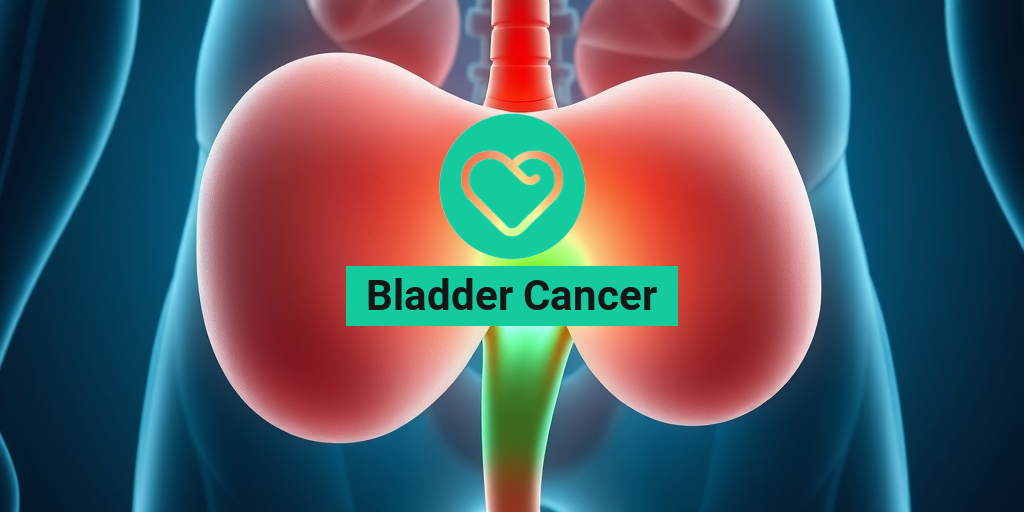What Is Abdominal Migraine?
Have you ever experienced a throbbing headache, only to find that the pain is actually coming from your abdomen? You’re not alone! Abdominal migraine is a type of migraine that affects the abdominal region, causing discomfort, pain, and a range of other symptoms. In this article, we’ll delve into the world of abdominal migraines, exploring what they are, their symptoms, and how they can be treated.
Defining Abdominal Migraine
An abdominal migraine is a type of migraine that occurs in the abdominal region, rather than the head. It’s a condition that affects both children and adults, and can be just as debilitating as a traditional migraine. The exact cause of abdominal migraines is still unknown, but research suggests that they may be linked to changes in serotonin levels, hormonal fluctuations, and even food sensitivities.
Abdominal migraines are often misdiagnosed as other conditions, such as irritable bowel syndrome (IBS), appendicitis, or gastroenteritis. However, with the right diagnosis and treatment, it’s possible to manage abdominal migraines and reduce their impact on daily life.
Abdominal Migraine Symptoms
So, how do you know if you’re experiencing an abdominal migraine? The symptoms can vary from person to person, but common signs include:
- Pain or discomfort in the abdominal region, which can range from mild to severe
- Nausea and vomiting, which can lead to dehydration and electrolyte imbalances
- Abdominal tenderness, which can be tender to the touch
- Diarrhea or constipation, which can lead to changes in bowel habits
- Fatigue and lethargy, which can make it difficult to carry out daily activities
- Sensitivity to light and sound, which can exacerbate symptoms
- Changes in appetite, which can lead to weight loss or gain
In some cases, abdominal migraines can also be accompanied by other symptoms, such as:
- Headaches, which can range from mild to severe
- Dizziness and lightheadedness, which can increase the risk of falls
- Palpitations, which can be a sign of underlying anxiety or stress
If you’re experiencing any of these symptoms, it’s essential to speak with a healthcare professional for an accurate diagnosis and treatment plan. Remember, abdominal migraines are a real condition that requires attention and care.
Stay tuned for our next article, where we’ll explore the treatment options for abdominal migraines and how you can manage your symptoms effectively. In the meantime, if you have any questions or concerns, feel free to reach out to Yesil Health AI (yesilhealth.com) for evidence-based health answers 🤖.

Abdominal Migraine vs. Traditional Migraine
When it comes to migraines, most people think of the traditional kind – the ones that cause throbbing headaches, sensitivity to light and sound, and nausea. However, there’s another type of migraine that affects the abdominal area, causing symptoms that can be just as debilitating. So, what’s the difference between an abdominal migraine and a traditional migraine?
Traditional Migraine Symptoms
A traditional migraine typically presents with symptoms such as:
- Throbbing headache, usually on one side of the head
- Sensitivity to light and sound
- Nausea and vomiting
- Blurred vision or sensitivity to light
- Fatigue and mood changes
Abdominal Migraine Symptoms
An abdominal migraine, on the other hand, affects the abdominal area, causing symptoms such as:
- Severe abdominal pain, often in the mid-abdominal area
- Nausea and vomiting
- Diarrhea or constipation
- Abdominal tenderness or guarding
- Fatigue and mood changes
As you can see, both types of migraines share some similar symptoms, such as nausea and fatigue. However, the key difference lies in the location and severity of the pain. Traditional migraines are characterized by headaches, while abdominal migraines are marked by abdominal pain.
Abdominal Migraine Causes and Triggers
While the exact causes of abdominal migraines are still not fully understood, research suggests that they may be linked to various factors, including:
Hormonal Changes
Hormonal fluctuations, such as those experienced during menstruation or menopause, can trigger abdominal migraines in some individuals. This is because hormonal changes can affect the gut-brain axis, leading to changes in digestion and abdominal pain.
Diet and Nutrition
Certain foods and drinks can trigger abdominal migraines, including:
- Caffeine
- Alcohol
- Processed foods
- Food additives and preservatives
Identifying and avoiding trigger foods can help alleviate abdominal migraine symptoms.
Stress and Anxiety
Stress and anxiety can exacerbate abdominal migraine symptoms, making it essential to manage stress levels through relaxation techniques, such as meditation and deep breathing.
Other potential triggers of abdominal migraines include:
- Sleep disturbances
- Environmental factors, such as changes in weather or altitude
- Underlying medical conditions, such as irritable bowel syndrome (IBS) or gastroesophageal reflux disease (GERD)
By understanding the causes and triggers of abdominal migraines, individuals can take steps to manage their symptoms and improve their overall quality of life. 💡

Abdominal Migraine Diagnosis and Testing
Receiving an accurate diagnosis is crucial for effective treatment and management of abdominal migraines. However, diagnosing abdominal migraines can be challenging due to the lack of specific tests and the similarity of symptoms with other conditions. In this section, we’ll explore the diagnostic process and testing methods used to identify abdominal migraines.
Symptom Evaluation
The diagnostic process typically begins with a thorough evaluation of symptoms. Your healthcare provider will ask you to describe your symptoms, including the frequency, duration, and severity of abdominal pain, nausea, vomiting, and other associated symptoms. Be prepared to provide detailed information about your symptoms, including:
- When your symptoms started and how long they last
- The location and nature of your abdominal pain (e.g., cramping, stabbing, or dull ache)
- Any triggers or factors that seem to exacerbate your symptoms
- Any associated symptoms, such as headaches, sensitivity to light and sound, or mood changes
Physical Examination
A physical examination is essential to rule out other conditions that may be causing your symptoms. Your healthcare provider will perform a thorough abdominal examination, checking for:
- Tenderness or guarding in the abdominal area
- Abdominal distension or bloating
- Any signs of dehydration or electrolyte imbalance
Diagnostic Tests
While there are no specific tests for abdominal migraines, your healthcare provider may order diagnostic tests to rule out other conditions that may be causing your symptoms. These tests may include:
- Complete Blood Count (CBC) to rule out infection or inflammation
- Electrolyte panel to check for electrolyte imbalance
- Urinalysis to rule out urinary tract infections or kidney stones
- Imaging tests, such as ultrasound or CT scans, to rule out other abdominal conditions
- Endoscopy or colonoscopy to rule out gastrointestinal conditions
Differential Diagnosis
Abdominal migraines can be mistaken for other conditions, such as:
- Irritable Bowel Syndrome (IBS)
- Inflammatory Bowel Disease (IBD)
- Gastroesophageal Reflux Disease (GERD)
- Functional Abdominal Pain
- Other gastrointestinal conditions
A thorough diagnostic evaluation is essential to rule out these conditions and ensure an accurate diagnosis of abdominal migraines.
Abdominal Migraine Treatment and Management
While there is no cure for abdominal migraines, various treatment options can help manage symptoms and improve quality of life. In this section, we’ll explore the treatment options and management strategies for abdominal migraines.
Lifestyle Modifications
Making lifestyle modifications can help reduce the frequency and severity of abdominal migraine symptoms. These modifications may include:
- Dietary changes: Avoiding trigger foods, eating small, frequent meals, and staying hydrated
- Stress management: Practicing relaxation techniques, such as meditation or deep breathing
- Regular exercise: Engaging in gentle, low-impact exercises, such as yoga or walking
- Sleep hygiene: Establishing a consistent sleep schedule and creating a relaxing sleep environment
Medications
Medications can help alleviate abdominal migraine symptoms. These may include:
- Triptans or ergotamines to relieve migraine pain
- Anti-nausea medications to reduce nausea and vomiting
- Pain relievers, such as acetaminophen or ibuprofen, to manage abdominal pain
- Antispasmodics to relieve abdominal cramping
Alternative Therapies
Some people find alternative therapies helpful in managing abdominal migraine symptoms. These may include:
- Acupuncture to relieve pain and reduce stress
- Chiropractic care to relieve spinal tension and improve digestion
- Herbal remedies, such as ginger or peppermint, to soothe the stomach
It’s essential to work with your healthcare provider to develop a personalized treatment plan that addresses your unique needs and symptoms. By combining lifestyle modifications, medications, and alternative therapies, you can effectively manage your abdominal migraines and improve your quality of life. 💊

Abdominal Migraine in Children
Abdominal migraines can affect anyone, regardless of age. However, it’s essential to recognize the unique challenges and considerations when it comes to abdominal migraines in children. As a parent, it can be distressing to see your child experiencing recurring episodes of abdominal pain, nausea, and vomiting. In this section, we’ll delve into the specifics of abdominal migraines in children, including symptoms, diagnosis, and treatment options.
Symptoms of Abdominal Migraine in Children
Children with abdominal migraines often exhibit similar symptoms to adults, but with some key differences. Common symptoms include:
- Recurring abdominal pain, often described as dull, aching, or cramping
- Nausea and vomiting, which can lead to dehydration and electrolyte imbalances
- Pallor, or pale skin, due to decreased blood flow
- Fatigue, which can impact daily activities and mood
- Anxiety and stress, which can exacerbate symptoms
Keep in mind that children may not be able to articulate their symptoms as clearly as adults, so it’s crucial to observe their behavior and body language for signs of discomfort or distress.
Diagnosing Abdominal Migraine in Children
Diagnosing abdominal migraines in children can be challenging, as the symptoms can be similar to other conditions, such as gastroesophageal reflux disease (GERD) or inflammatory bowel disease (IBD). A thorough medical history, physical examination, and diagnostic tests (e.g., endoscopy, imaging studies) can help rule out other conditions and confirm the diagnosis of abdominal migraine.
Treatment Options for Abdominal Migraine in Children
Treatment for abdominal migraines in children typically involves a combination of lifestyle changes, medications, and alternative therapies. Some common approaches include:
- Dietary modifications, such as avoiding trigger foods and increasing hydration
- Medications, like triptans or anti-nausea drugs, to alleviate symptoms
- Relaxation techniques, such as deep breathing, progressive muscle relaxation, or meditation, to reduce stress and anxiety
- Alternative therapies, like acupuncture or biofeedback, to help manage symptoms and improve overall well-being
It’s essential to work closely with your child’s healthcare provider to develop a personalized treatment plan that addresses their unique needs and symptoms.
Abdominal Migraine and Other Conditions
Abdominal migraines often co-occur with other conditions, which can impact diagnosis, treatment, and overall quality of life. In this section, we’ll explore some common conditions that may be associated with abdominal migraines.
Comorbidities and Abdominal Migraine
Research suggests that abdominal migraines may be linked to various comorbidities, including:
- Migraine headaches, which can share similar triggers and symptoms
- Irritable bowel syndrome (IBS), which can cause similar gastrointestinal symptoms
- Fibromyalgia, which can lead to widespread pain and fatigue
- Anxiety and depression, which can exacerbate abdominal migraine symptoms
It’s crucial to address these comorbidities simultaneously to ensure comprehensive care and optimal symptom management.
The Gut-Brain Connection
The gut-brain axis plays a significant role in abdominal migraines. The gut and brain are connected through the vagus nerve, which can influence digestion, mood, and overall health. Factors like gut dysbiosis, or an imbalance of gut bacteria, can contribute to abdominal migraine symptoms. Maintaining a healthy gut microbiome through diet, probiotics, and other interventions can help alleviate symptoms and improve overall well-being.
By understanding the complex relationships between abdominal migraines and other conditions, you can better navigate diagnosis, treatment, and management of this complex condition. 💡

Frequently Asked Questions about Abdominal Migraines
What are Abdominal Migraines?
An abdominal migraine is a type of migraine that affects the abdominal area, causing symptoms such as stomach pain, nausea, and vomiting. It is often accompanied by other symptoms like headache, sensitivity to light and sound, and fatigue.
What are the Symptoms of Abdominal Migraines?
The symptoms of abdominal migraines can vary from person to person, but common symptoms include:
- Severe stomach pain or cramping
- Nausea and vomiting
- Diarrhea or constipation
- Headache or migraine
- Sensitivity to light and sound
- Fatigue or lethargy
- Abdominal tenderness or guarding
What Triggers Abdominal Migraines?
The exact triggers of abdominal migraines are not fully understood, but some common triggers include:
- Hormonal changes
- Food triggers (e.g., gluten, dairy, citrus fruits)
- Stress and anxiety
- Lack of sleep or disrupted sleep patterns
- Certain medications
- Other medical conditions (e.g., irritable bowel syndrome, gastroparesis)
How are Abdominal Migraines Diagnosed?
Diagnosing abdominal migraines can be challenging, as the symptoms can be similar to other conditions. A healthcare provider will typically:
- Conduct a physical exam
- Take a detailed medical history
- Perform diagnostic tests (e.g., endoscopy, imaging studies)
- Rule out other conditions that may be causing the symptoms
How are Abdominal Migraines Treated?
Treatment for abdominal migraines typically involves a combination of:
- Pain relief medications (e.g., triptans, NSAIDs)
- Anti-nausea medications
- Lifestyle changes (e.g., dietary modifications, stress management)
- Alternative therapies (e.g., acupuncture, massage)
Can Abdominal Migraines be Prevented?
While abdominal migraines cannot be completely prevented, there are steps you can take to reduce the frequency and severity of attacks:
- Keep a headache diary to track triggers and symptoms
- Avoid known triggers
- Practice stress-reducing techniques (e.g., meditation, yoga)
- Get regular exercise and maintain a healthy weight
- Get enough sleep and maintain a consistent sleep schedule
What is the ICD-10 Code for Abdominal Migraines?
The ICD-10 code for abdominal migraines is G43.809.
Can Abdominal Migraines Affect Children?
Yes, abdominal migraines can affect children. In fact, abdominal migraines are more common in children than adults. 🤕
What is the Relationship Between Abdominal Migraines and Other Conditions?
Abdominal migraines can be associated with other conditions, such as:
- Irritable bowel syndrome (IBS)
- Gastroparesis
- Fibromyalgia
- Chronic fatigue syndrome
Where Can I Find More Information About Abdominal Migraines?
There are many resources available for learning more about abdominal migraines, including:
- The American Migraine Foundation
- The Migraine Research Foundation
- The National Institute of Neurological Disorders and Stroke (NINDS)
- Online support groups and forums (e.g., Reddit, Facebook groups)




